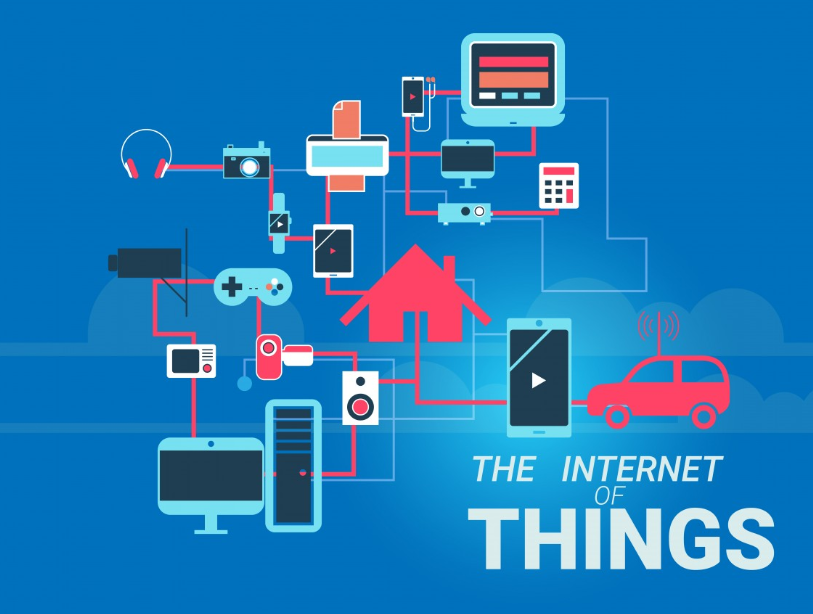|
The OP
Published on 2021-2-4 10:12
Only look at the author
This post is from RF/Wirelessly
| ||||||||||
|
Personal signature
玩板看这里: https://bbs.eeworld.com.cn/elecplay.html EEWorld测评频道众多好板等你来玩,还可以来频道许愿树许愿说说你想要玩的板子,我们都在努力为大家实现! |
||||||||||
This post is from RF/Wirelessly
| ||||||||||
|
Personal signature
玩板看这里: https://bbs.eeworld.com.cn/elecplay.html EEWorld测评频道众多好板等你来玩,还可以来频道许愿树许愿说说你想要玩的板子,我们都在努力为大家实现! |
||||||||||
|
|
- 【Posts】Summary of the characteristics of 5 wireless transmission protocols for the Internet of Things
- 【Posts】[The Big Secret of the Internet of Things Factory] How are circuit boards and data transmission modules produced?
- 【Posts】Three major programming languages for the development of the Internet of Things
- 【Posts】Choose IoT Development or Software Development? What is the difference?
- 【Posts】MicroPython Hands-on (28) - Yeelight for the Internet of Things
- 【Posts】MicroPython Hands-on (26) - OneNET of the Internet of Things
- 【Posts】MicroPython Hands-on (31) - Easy IoT
- 【Posts】MicroPython Hands-on (27) - WeChat Mini Program for the Internet of Things
- 【Download】2012 Internet of Things Industry Risk Analysis and Development Trend Forecast
- 【Download】Development Trends of Smart IoT Technologies and Applications
- 【Download】Tipping point: Development trends and opportunities of the Internet of Things industry in the 5G era
- 【Download】Forecast and analysis of the development trend of my country\'s inverter market
- 【Download】\"Big Talk on the Internet of Things\" HD Bookmark Edition
- 【Download】Noise and Power Consumption of IoT Smart Sensors
- 【Download】Bluetooth 4.0 BLE Development Complete Manual: Practical IoT Development Technology
- 【Download】Japanese Illustrated Book Series: Illustrated Internet of Things
- 【Design】# Fifth Lichuang Electronic Design Competition# Pest monitoring, identification and prediction system based on the Internet of Things and deep learning
- 【Design】UnPhone, an IoT platform based on esp32s3 (with a 300-page IoT textbook)
- 【Design】Rapid-IOT drone adapter board
- 【Design】Industrial IoT Router
- 【Design】IoT gateway/communication center
- 【Design】[Training Camp] [Internet of Things Practical Combat] Lichuang EAD Lantern-866388A
- 【Circuits】Design of hydroponic farm based on IoT
- 【Circuits】Design of water management system based on Internet of Things
- 【Circuits】How to Design a Smart Garbage Monitoring System Using IoT
- 【Circuits】How to use M5Stamp PICO and Qubitro to build an IoT door lock monitoring system
- 【Circuits】Design and development trends of power modules
- 【Articles】Atmosic envisions five major trends in the development of the Internet of Things in 2021
- 【Articles】2021 World Internet of Things Expo will kick off
- 【Articles】Atmosic CEO's three predictions for the development of the Internet of Things in 2020
- 【Articles】Digital Theory: Forecast of China's mobile phone industry development trends in the second half of 2021 revealed
- 【Articles】Keysight Technologies predicts technology development trends in 2021
- 【Articles】From "Internet +" to "Internet of Things ×", the development trend of IoT application market and full-chain wireless modules
-
Share the predictions for the 2021 eSports Contest
[i=s]ThispostwaslasteditedbyJacktangon2021-8-2615:59[/i]Basedonthecomponentsofficiallyprovidedthistime,wecanjudgeinwhatformthisyear'squestionsmayappear!Letmemakeitclearfirst!Ijustwanttosharemythoughts.Ifitisdifferentfromthefinalcompetitiont ...
-
[Awards] Good luck in the start of the project, grab the building and get a gift! Prediction: Hot keywords in electronics in 2021
Eventdetails:https://bbscomthread-1156770-1-1.htmlThankyouforyouractiveparticipation!Congratulationstothefollowingnetizensforwinning!NetizenswhohavereceivedphysicalprizespleasegototheforumtoconfirmyourpersonalinformationonMarch29(clickheret ...
-
[Review of "Artificial Intelligence Practical Tutorial"] Python Function
#【《ArtificialIntelligencePracticeTutorial》Evaluation】PythonFunction##FunctionIfablockofcodeisneededmultipletimeswhendevelopingaprogram,butinordertoimprovetheefficiencyofwritingandthereuseofcode,thecodeblockswithindependentfunctionsareor ...
- Help! My newly bought power bank is broken!
- I have a question about the network port circuit?
- LCD screen display effect is related to viewing angle and contrast
- Flip switch based on LIS2DW12 of PSOC6;
- Discussion on the stability of single chip microcomputer system in the field of measurement and control
- Discussion about MicroPython Engineer's Pocket Toolbox
- Current status of domestic and foreign automotive radar products
EEWorld Datasheet Technical Support
-
"Cross-chip" quantum entanglement helps build more powerful quantum computing capabilities
IBM scientists have achieved "cross-chip" quantum entanglement - successfully entangled two "Eagl
-
Ultrasound patch can continuously and noninvasively monitor blood pressure
A research team at the University of California, San Diego, has developed an innovative wearable
-
Europe's three largest chip giants re-examine their supply chains
At the Electronica 2024 CEO Roundtable held just last week, the CEOs of three chip giants, Infine
- It is reported that Kioxia will be approved for listing as early as tomorrow, and its market value is expected to reach 750 billion yen
- The US government finalizes a $1.5 billion CHIPS Act subsidy to GlobalFoundries to support the latter's expansion of production capacity in the US
- SK Hynix announces mass production of the world's highest 321-layer 1Tb TLC 4D NAND flash memory, plans to ship it in the first half of 2025
- UWB is a new way to use it in cars. Can wireless BMS also use it?
- Filling the domestic gap! China Mobile, Huawei and others jointly released the first GSE DPU chip
- Samsung Electronics NRD-K Semiconductor R&D Complex to import ASML High NA EUV lithography equipment
- Apple reveals the secret of its own chip success: competitors can't use the latest cutting-edge technology
- Problems with STM32 and passive buzzer playing sound
- Embedded Tutorial_DSP Technology_DSP Experiment Box Operation Tutorial: 2-28 Building a Lightweight WEB Server Experiment
- OPA847IDBVR op amp domestic replacement
- AG32VF407 Test UART
- [Digi-Key Follow Me Issue 2] Chapter 1: Sharing on receiving the goods
- What model is this infrared receiver? Which model can be used instead? Thank you
- Selling brand new unopened ZYNQ 7Z020 FPGA core board
- The LORA module used in the lithium battery-powered water meter setting can save energy when 100 water meters are installed in one corridor.
- I would like to ask, when a port is set to RX0, is it necessary to set the input and output direction of this port?
- Why is this year so difficult? It’s even more difficult than during the pandemic. I’m 30 and facing unemployment. I’m so confused.
- Ask about the voltage regulator test question
- [Xiaohua HC32F448 Review] About Xiaohua Semiconductor's UART interrupt sending and PRINTF construction and redirection
- 【BIGTREETECH PI development board】 HDMI output test
- 【BIGTREETECH PI development board】+08. Audio test (zmj)
- [Xiaohua HC32F448 Review] +RTC electronic clock








 提升卡
提升卡 变色卡
变色卡 千斤顶
千斤顶